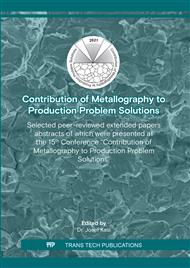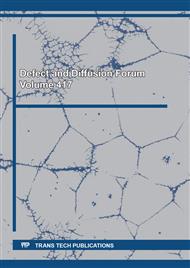p.81
p.87
p.95
p.101
p.111
p.117
p.123
p.131
p.141
Application of Metallographic Investigation in Development of Sub-Sized Specimen Testing Techniques
Abstract:
Currently, there is a growing interest in testing of mechanical properties using sub-sized samples. Using these methods, it is possible to measure the current mechanical properties of the component without the necessity of shutting down the device. This is advantageous in the cases, when the residual life (especially in the energy sector) needs to be evaluated. Another advantage of this method is that due to the very small dimensions of the extracted piece of material, only the local properties of the component are tested. Thus, the miniature samples can be extracted from areas that are critical for material failure, e.g. in the transition area of welded joints and thin-walled pipes, in a direction other than axial (for axial direction standard tensile test can be used). Another small specimen application can be found in the development of new materials. Modern materials (e.g. additively processed materials) are usually highly expensive, so miniature samples are an ideal solution. It was observed that the MTT results are fully comparable with the results on standard test pieces without the need for correlation. Mini-Charpy samples (3×4×27 mm) were used to determine transition temperature FATT. In this case a correlation relationship between the Mini- Charpy and standard sample Charpy (10×10×55 mm) constant C = 60 was successfully found
Info:
Periodical:
Pages:
111-116
Citation:
Online since:
June 2022
Authors:
Keywords:
Price:
Сopyright:
© 2022 Trans Tech Publications Ltd. All Rights Reserved
Share:
Citation:



